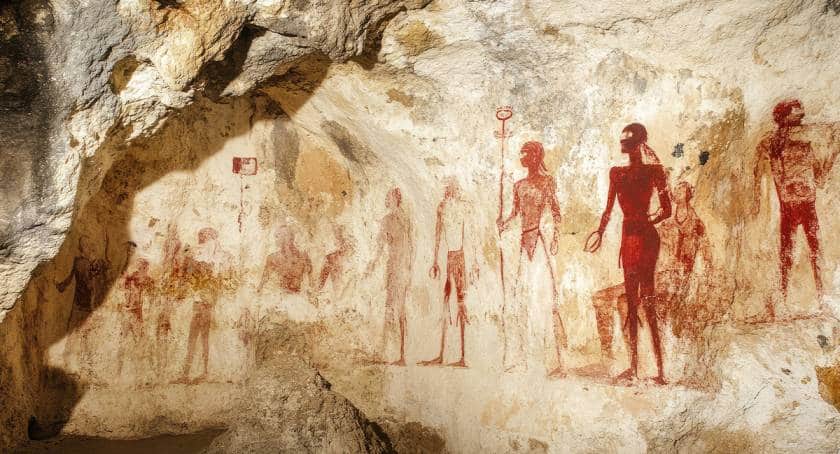Odisha’s Ancient Rock Art – Cultural Legacy
Odisha, a state in eastern India, is well known for its rich cultural legacy, beautiful temples, and pristine beaches. However, ancient rock art sites are hidden among its rugged landscapes, providing fascinating insights into early human civilization. Often overlooked, these ancient petroglyphs and cave paintings hold immense archaeological and anthropological significance, offering a look into our ancestors’ lives, beliefs, and artistic expressions.
The Discovery of Odisha’s Rock Art
The prehistoric rock art of Odisha was first discovered in the early 20th century, sparking interest among archaeologists and researchers. These sites, scattered across various districts, date back to the Upper Paleolithic, Mesolithic, and Neolithic periods, showcasing the evolution of early human societies. These artworks, primarily found in the districts of Sundargarh, Kalahandi, Nuapada, Sambalpur, and Bargarh, reveal petroglyphs (rock engravings) and pictographs (rock paintings) that depict hunting scenes, religious rituals, and animals, offering invaluable insights into early human culture and survival.
Types and Themes of Rock Art
The rock art in Odisha mainly comprises petroglyphs (rock carvings) and pictographs (rock paintings). Artists used natural pigments and sharp tools to etch or paint figures onto the surfaces of caves and rock shelters.
- Petroglyphs: These are engravings made by chiseling or carving the rock surface. They often depict geometric patterns, animals, and human figures engaged in hunting, dancing, and rituals.
- Pictographs: These paintings, created using natural minerals like red and white ochre, showcase scenes of daily life, wildlife, and spiritual beliefs. Some paintings resemble hunting expeditions, indicating early humans’ dependence on hunting and gathering.
Notable Rock Art Sites in Odisha
Odisha has several significant prehistoric rock art sites, each with unique artistic expressions and historical relevance. Here are some of the most notable ones:
- Gudahandi Rock Shelters (Kalahandi District)
One of Odisha’s most remarkable rock art sites, the Gudahandi Rock Shelters, features ancient paintings created using red and white ochre pigments. Believed to be over 10,000 years old, these depictions include human figures, animals, and complex geometric patterns. These images offer hints of early religious beliefs, social practices, and daily life activities, making the site a crucial link to Odisha’s prehistoric past.
- Yogimatha Rock Shelters (Nuapada District)
Located within the scenic Sunabeda Wildlife Sanctuary, the Yogimatha rock art site is known for its complex petroglyphs and pictographs. The artworks illustrate scenes of human activities such as dancing, hunting, and communal gatherings, indicating the presence of early settlements in the region. These engravings provide a rare look into prehistoric communities’ spiritual and social lives.
- Ushakothi Rock Art (Sambalpur District)
Also referred to as Ushakothi Caves, this site is notable for its vivid rock paintings, predominantly in red and white hues. The depictions mainly feature hunting scenes and animals such as deer, tigers, and elephants, reflecting the deep connection between prehistoric humans and the wildlife surrounding them. This site is crucial for understanding ancient Odisha’s ecological and cultural dynamics.
- Similikhol Rock Paintings (Bargarh District)
A lesser-known yet significant site, Similikhol shelters contain prehistoric paintings created using natural pigments. The artworks display human-animal interactions and abstract symbols, possibly representing early spiritual beliefs or totemic practices. The site offers clues about the artistic ingenuity of early humans and their symbolic representations of the world around them.
- Manikmada Rock Shelter (Sundargarh District)
Artists adorned this rock shelter with beautiful petroglyphs, showcasing early artistic expressions carved into the rock surface. The engravings feature animals, human figures, and circular motifs, suggesting early symbolic expressions and possibly religious or astronomical significance. The detailed carvings make Manikmada an invaluable site for studying prehistoric Odisha.
Artistic Techniques and Symbolism
Ancient artists in Odisha created prehistoric rock art using natural pigments derived from minerals, clay, and organic substances. The primary colors used in these artworks include red, white, and black, which were applied using fingers, brushes made from twigs, or even by blowing pigment onto the rock surface.
The motifs and symbols depicted in Odisha’s rock art hold deep cultural and symbolic meanings. Some common representations include:
- Hunting Scenes: Showing how early humans relied on wildlife for survival and nourishment.
- Animal Figures: The Animal figures suggest reverence for nature and possibly represent early totemic beliefs.
- Geometric Patterns: Indicating abstract thought, early counting systems, or spiritual practices.
- Human Figures in Motion: Depicting dances, communal activities, or shamanistic rituals, showcasing early social and religious structures.
These artistic elements provide crucial insights into ancient Odisha’s evolution of human cognition, creativity, and cultural development.
Cultural and Historical Significance
Odisha’s rock art is a crucial bridge between the past and present, offering valuable insights into prehistoric lifestyles, artistic evolution, and the region’s cultural lineage. These ancient artworks provide evidence of early human habitation. They also enhance our understanding of migration patterns and the cultural diffusion of early South Asian civilizations.
Many of the motifs and symbols in these rock shelters resemble tribal art forms still practiced by indigenous communities in Odisha today. This includes the vibrant Saura and Gond paintings, which continue to showcase traditional techniques and themes. This artistic continuity highlights the enduring influence of prehistoric artistic traditions and their impact on Odisha’s cultural heritage.
Final Thoughts
Odisha’s ancient rock art is evidence of the region’s rich prehistoric heritage. These fascinating carvings and paintings provide insights into early human life and establish a profound connection between past and present artistic traditions. By recognizing, preserving, and promoting these hidden treasures, we can ensure that people genuinely appreciate Odisha’s prehistoric wonders.
If you are a history buff, an adventure seeker, or an art enthusiast, exploring Odisha’s rock art offers an exciting experience. It promises a journey into the depths of time. This journey offers wonder, mystery, and cultural richness at every turn. Through continued efforts in research, documentation, and conservation, we can protect and celebrate these prehistoric masterpieces as invaluable elements of India’s cultural heritage.


